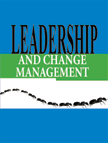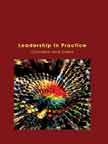Excerpts
About BISWA
|
BISWA, an NGO registered under India's Societies Registration Act XXI of 1860, was founded by Khirod Chandra Malick, a professional banker, with some like-minded people in 1994. Born in 1956, Malick had a good background in economics, law, business administration, finance, and banking. Headquartered in Danipali (Sambalpur), BISWA was a relatively large social service organization in India and an MFI...
BISWA's Microfinance Activities
In 1994, BISWA started extending micro credit to needy people using the individual lending model. But in 1996, it decided to adopt the SHG model. This was also the time that BISWA started making a shift from a donor-dependent model to earned income strategies. In its early days, BISWA's SHGs received credit facilities by directly being linked to banks. Or BISWA would avail of small loans from commercial banks such as SBI, or RRBs such as Bolangir Anchalik Gramya Bank to extend credit to the SHGs...
|

|
Formation of Self Help Groups
The SHGs, the backbone of BISWA's microfinance program, were primarily comprised of women and had 16 to 20 members each. These groups were formed after BISWA's field staff identified the village and the locality, and conducted a baseline survey of the socio-economic indicators...
Loan and Repayment
For an SHG to be eligible to avail of a loan from BISWA or any other entity such as a bank, it had to have been operational for at least six months and it should have attained an 'A' or 'B' grade in BISWA's gradation process. The organization followed a stringent gradation process, judging SHGs on 40 indicators, each carrying five points...
Formation of Self Help Federations
With the growth of BISWA's microfinance initiative, the organization had to face a growing number of complexities. The SHGs were not legal entities and, as such, formal financial institutions considered it risky to extend loans to them. To overcome this obstacle, BISWA started promoting Self Help Federations (SHFs) from 2003...
Excerpts Contd... - Next Page>>
|
|









